Civil War Fatalities in Wexford
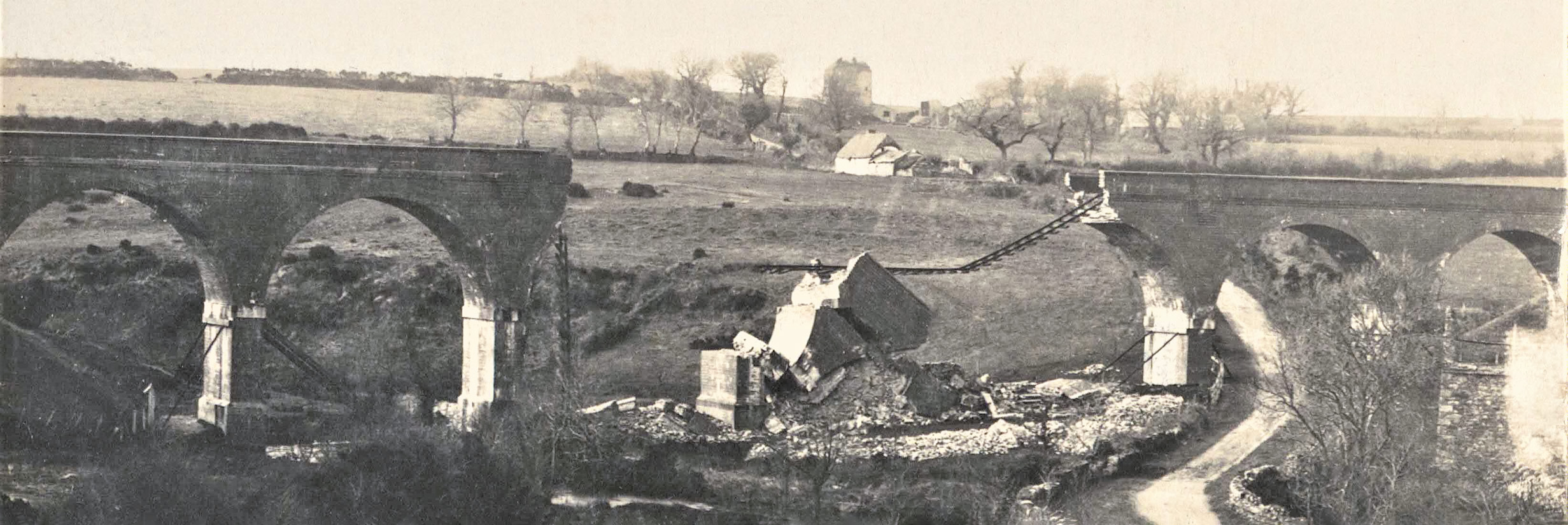
The Civil War in Wexford
by Aaron Ó Maonaigh
During the Civil War, Wexford experienced levels of militancy, destruction, and loss of life on a much greater scale than the War of Independence. However, there was a notable discrepancy between the north and south of the county, with the latter surpassing the former in terms of lethal violence and anti-Treaty IRA (hereafter IRA) activity. When the split in the nationalist movement over the Anglo-Irish Treaty occurred, the majority of IRA members in Wexford sided with the anti-Treaty position.
In North Wexford, the brigadier and several of his staff supported the Treaty, but this was complicated by the fact that among the brigade’s battalions there was a sizable anti-Treaty minority. The situation was clearer in South Wexford, where the brigade staff, as well as whole units took the anti-Treaty side and only a few rank-and-file members declared for the Treaty. Replicating the split in the IRA, Cumann na mBan splintered into rival organisations, with the pro-Treaty element forming Cumann na Saoirse. During the spring and early summer of 1922, pro- and anti-Treaty organisations scrambled to occupy barracks vacated by the departing British military and Royal Irish Constabulary.
The 'conventional' phase
The uneasy peace between the two factions in Wexford was shattered when conflict erupted in Dublin on 28 June 1922. The IRA in Wexford were bolstered in July by a contingent of Tipperary volunteers and members of the Four Courts garrison, including Ernie O’Malley and Paddy O’Brien, who had escaped during the fighting in the capital. Together with local IRA units, they seized control of all the main towns and forced the surrender of National Army positions at Enniscorthy and Ferns. During the opening fighting three combatants were killed - two IRA and one National Army.
Another IRA member, James Roche, was fatally wounded in an accident outside Newtownbarry (Bunclody) on 4 July. Roche was returning from duty in Blessington and Carlow to his post at Newtownbarry when his car overturned, one of three accidental deaths among the IRA in the county during the Civil War. In Wexford town, Patrick Connolly, a draper's assistant and Irish Republican Police officer, was shot dead while responding to a disturbance at a public house. The town of New Ross was briefly occupied by up to 200 men under the Cork IRA leader Sean Moylan, however, his sojourn to the Model County ended in failure and there was no open fighting in the town. Moylan and his men returned home. Within two days the balance of power shifted.
On 6 July, a large relief force of government troops set out from Dublin for Wexford. Making their way down the south-eastern coast they succeeded in recapturing all of the main towns, scattering the remaining IRA who retreated into the surrounding countryside. In some areas republican organisation simply collapsed. With that, the conventional phase of the war was brought to an abrupt end.
The guerrilla phase
Driven from the towns, during the summer of 1922 the IRA regrouped and embarked on a determined guerrilla campaign. They demolished road and rail bridges to block communications and disrupt the movement of National Army troops throughout the county. Fighting was heaviest in the south of the county, particularly in the 4th Battalion’s area around Wexford Town where Bob Lambert’s column carried off several successful ambushes. On 24 July, for instance, an attack by Lambert’s column on the Wexford to Dublin mail train at Killurin resulted in the deaths of three government troops. Lambert’s men also forced the surrender of the National Army garrison at Ferrycarrig, and made off with a considerable quantity of arms and ammunition. During the attack five troops were wounded, one fatally.
![Members of the North Wexford flying column, 1920-22 [Courtesy of the Michael Fitzpatrick Collection] Members of the North Wexford flying column, 1920-22 [Courtesy of the Michael Fitzpatrick Collection]](/en/media/projectsandcentres/irishrevolution/4.MembersoftheNorthWexfordflyingcolumn,1920-22_-697x539.jpg)
Fig. 1 Members of the North Wexford flying column, 1920-22 [Courtesy of the Michael Fitzpatrick Collection]
IRA resistance was much slower to develop in the north of the county where the arrest of key activists such as divisional O/C Padraic Fleming, V/C North Wexford Tom Brennan, and Jack ‘Waxer’ Whelan hampered local organisation and units lacked the requisite man and firepower to launch large scale ambushes. As a result, much of the activity in northern Wexford consisted of nightly sniping attacks on National Army posts and disruptive operations such as the trenching of roads.
The commandeering of supplies from civilians as well as the disruption to daily life caused by infrastructure damage did little to ingratiate the IRA with the public. Its support was strained and limited to rural areas where pockets of IRA resistance were strongest. On the other hand, the Provisional Government, which had more resources to fund its war effort, counted among its supporters the business community, large farmers, southern unionists, and the Catholic Church. However, the prolonged nature of the guerrilla war, and general distrust of National Army troops in Wexford eroded public support for the government as the war progressed.
![Taylorstown Viaduct [Courtesy of Wexford County Archive] Taylorstown Viaduct [Courtesy of Wexford County Archive]](/en/media/projectsandcentres/irishrevolution/1.TaylorstownViaduct-786x475.jpg)
Fig. 2 Taylorstown Viaduct [Courtesy of Wexford County Archive]
IRA activity reached its peak in October 1922, during which three members of the National Army were assassinated and three civilians killed. An engagement at Ferrycarrig on 22 October resulted in the deaths of four troops and the serious wounding of several others. Ambushes and the destruction of infrastructure continued in the months that followed and several efforts to broker a truce between the two sides, as well as calls for peace from public bodies and trade unions came to nothing. By the end of 1922 the National Army in Wexford was in crisis. A number of senior officers had resigned, and rumours of internal dissent among the troops circulated in the press. Despite a clear numerical advantage and superior resources, the state forces struggled to quell republican resistance in the county. The arrival in February of seasoned officers Tommy Ryan and Pádraig Ó Conchubhair, dispatched by GHQ to Wexford, heralded the overhaul of the ineffectual command and the establishment of mobile units which swept the county arresting republican activists drastically limited the remaining Active Service Units’ (ASU) areas of operations.
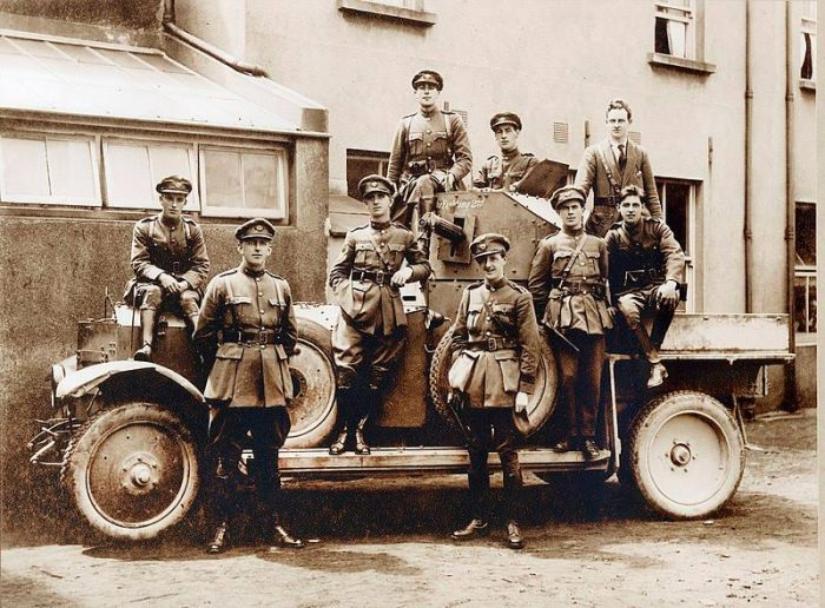
Fig. 3 National Army relief force at Wexford, July 1922 [Charles Vize Collection, Ibar Carty, Enniscorthy]
While the IRA continued to maintain an active presence in Wexford in 1923, the reinforced and restructured National Army, sustained fighting, arrests and the deaths of key volunteers began to take its toll. January saw the first IRA combat fatalities when the 3rd Battalion, South Wexford Brigade ASU, was surrounded near Spencerstown and two of its members, Bernie Radford and Con McCarthy, shot dead. As a result of their deaths, the column merged with Lambert’s unit and because the ‘people [were] afraid to give food’, the members of the ASU were ‘often hungry’.
During this period the IRA embarked on a campaign of reprisal in response to the government’s execution policy, targeting the homes of Free State senators and government supporters. Between January and March 1923, seven big houses and at least two private dwellings were destroyed in Wexford.
On 13 March three IRA members, James Parle, John Creane, and Patrick Hogan were executed by firing squad at Wexford Goal. Lambert’s column responded two weeks later by abducting three National Army soldiers from a public house at Adamstown and summarily executing them. In reprisal, Michael Furlong, a republican activist was shot dead at Adamstown by government troops. The official account was that he had been shot while trying to evade arrest. This series of tit-for-tat reprisals mirrors the pattern in other parts of the country, most notably in Kerry in March 1923, causing a peak in deaths during that month nationwide.
The IRA suffered a significant setback on 24 March when four members of the Kyle Column were killed in a shootout with the National Army near Ballyboggan. Lambert recalled that the incident practically finished the column as a fighting force. By the end of the month the republican position had decisively turned. Although the conflict continued for another two months, republican resistance simply petered out culminating in the dump arms order of 24 May.
-756x901.jpg)
Fig. 4 Map showing the location and affiliation of the forty-nine combatant and civilian fatalities in County Wexford between 28 June 1922 and 24 May 1923
Wexford’s Civil War casualties in context
Wexford is something of an outlier in provincial terms, in that the intensity of IRA activity actually increased as the Civil War progressed. Moreover, given the relative quiescence of the county during the War of Independence, the scale of violence during the Civil War is particularly remarkable.
Between January 1917 and December 1921, political violence claimed twenty-three lives in the county. During the Civil War period (28 June 1922 - 24 May 1923) a total of forty-nine fatalities occurred in County Wexford, which is all the more striking given the short time span of the conflict. A detailed breakdown of the data collected by John Dorney and Andy Bielenberg shows that the twenty-three National Army fatalities account for the majority of the total forty-nine Civil War fatalities in County Wexford, followed by IRA with sixteen dead, and finally civilians with ten. No members of either Cumann na mBan or Fianna Éireann were killed in Wexford between 28 June 1922 and 24 May 1923.
The initial conventional warfare produced few fatalities in Wexford, reflecting the limited scope of open fighting, which was restricted to the towns of Enniscorthy and Ferns. However, once the IRA’s guerrilla campaign began in late July 1922 it quickly gathered pace. Clusters of fatalities occurred during periods where IRA activity was at its most intense. October was the most violent month of 1922 with eleven fatalities, eight of whom were National Army troops, and three civilians.
Several features of Civil War fatalities in Wexford bear remarking upon. In the first instance, following the deaths of four IRA activists in July 1922, no further republican fatalities occurred until 28 December when Michael Morris was accidentally shot dead by his own hand whilst evading a National Army round up.
National Army casualties, which make up the largest proportion of Civil War dead, peaked in 1922 and then sharply declined in 1923. Conversely, IRA casualties increased significantly in 1923, from five in 1922 to eleven by the time of the dump arms order in May 1923. This may be explained by an examination of the trajectory of the war in the county. IRA activity was at its most intense in the autumn and winter of 1922. By the New Year republican resistance began to wane as the continuous fighting, arrests and deaths of key volunteers, coupled with an upsurge in National Army activity soon took its toll. This is most noticeable in March 1923, during which there were eight IRA fatalities, half of whom were killed in action against Free State troops.
Accidental deaths accounted for over a quarter of all deaths and were the main cause of death in the civilian category. National Army troops were more accident-prone than their republican counterparts, with ill-discipline and misadventure at the root of all five calamitous deaths in that cohort.
No civilians were shot by the Wexford IRA, as spies or otherwise, despite an order from local command stipulating the fate of the latter. In one instance, a civilian informer, John Carstairs, was fined for his transgression and ordered out of the country. This sharply contrasts with the War of Independence during which four of the six civilians killed during that conflict were executed by the IRA on suspicion of spying. The deaths did not stop with the dump arms order and several more casualties occurred in the months that followed. Widening the scope of Civil War fatalities to include those who died between April 1922 and December 1923 as a consequence of political violence produces another eleven fatalities, increasing the overall death toll in Wexford to sixty.
Fatality Profiles
Civilian: William Merriman
William Merriman, a twenty-five-year-old civilian hackney driver, from Rathaspeck, Co. Wexford, was accidentally shot and killed by the National Army on 25 November 1922 at South Main Street, Wexford. During the subsequent court of inquiry, it was claimed that the fatal shot was fired by Private Cassidy in an attempt to break up an altercation between a fellow National Army officer and two civilians. Merriman, who had been walking in the street at the time, was hit by Cassidy’s shot, which ricocheted into his chest, mortally wounding him. The court of inquiry returned a verdict of accidental death, and found no evidence of wilful intent on the part of Private Cassidy. William Merriman had served four years in the British Army before being discharged in 1921.
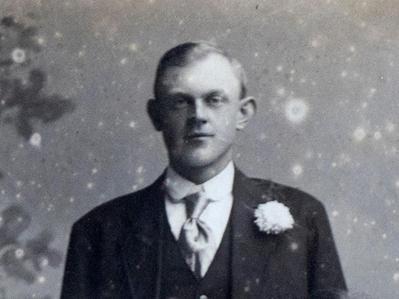
Fig. 5 William Merriman
IRA: Cornelius Florence McCarthy
Lieutenant Cornelius Florence McCarthy of Murrintown, Co. Wexford, was killed in action on 10 January 1923. Acting on intelligence received that members of the local IRA were in the vicinity, a party of National Army troops surrounded a stable on the Rossiter farm, at Spencerstown. A shootout ensued between the National Army and the men of the ASU, during which, McCarthy was killed and Captain Bernard Radford mortally wounded. A GAA player of some repute, McCarthy was a member of the Murrintown club which reached the county junior championship final on several occasions in the 1910s. He joined the IRA in 1917 and played an active part in the War of Independence and Civil War. Captured during the autumn of 1922 he was interned at Gormanston Camp, whence he escaped and resumed activity with the 3rd Battalion ASU. He was twenty-four years old at the time of his death.
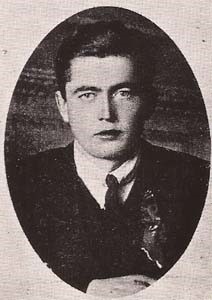
Fig. 6 Con McCarthy
National Army: John Dooley
Private John Dooley, of Loughbrown, Newbridge, Co. Kildare, was killed on 2 December 1922 at Ardcandrisk, Co. Wexford. Dooley was one of a contingent of National Army troops travelling in a Leland lorry when a mine exploded under their vehicle mortally wounding the deceased and seriously injuring two others. Dooley enlisted in the National Army on 29 June 1922 having served in the Newbridge corp of Fianna Éireann during the War of Independence. He was one of thirty-eight Fianna who represented the corps at the annual Bodenstown commemoration in 1918. Prior to enlisting in the National Army, Dooley was employed by the Great Southern & Western Railway as a permanent way inspector. He was nineteen-years-old at the time of his death.
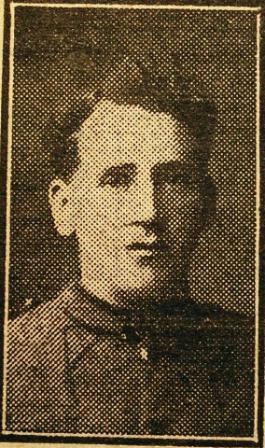
Fig. 7 John Dooley
Main Sources
Séamus Mac Suain, County Wexford’s civil war (Loch Garman, 1995)
Aaron Ó Maonaigh, ‘The Killurin ambush 1922 and the outbreak of Civil War in Co. Wexford', The Past: Organ of the Uí Cinsealaigh Historical Society, 33 (2019)
Aaron Ó Maonaigh, ‘Wexford’s Civil War dead: a statistical survey’: The Past: Organ of the Uí Cinsealaigh Historical Society, 34 (2020)
Author’s Bio
Aaron Ó Maonaigh is a graduate of Coláiste Phádraig, Droim Conrach (BA Hons) and Ollscoil Chathair Bhaile Átha Cliath (PME). He has written extensively on the subjects of sport during the Irish Revolution (1912-23) and the Civil War experience of County Wexford.




